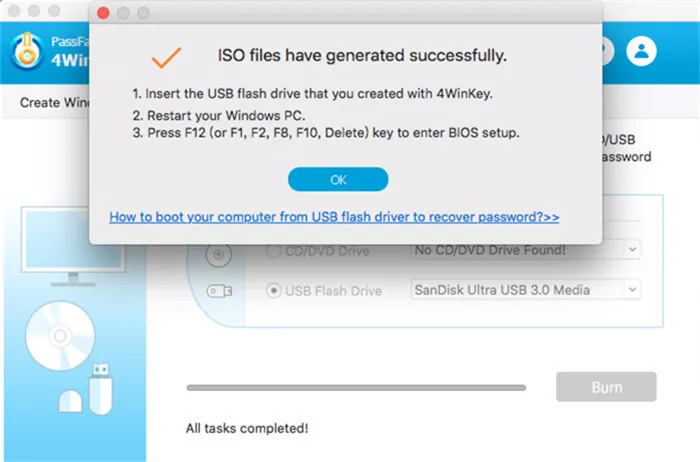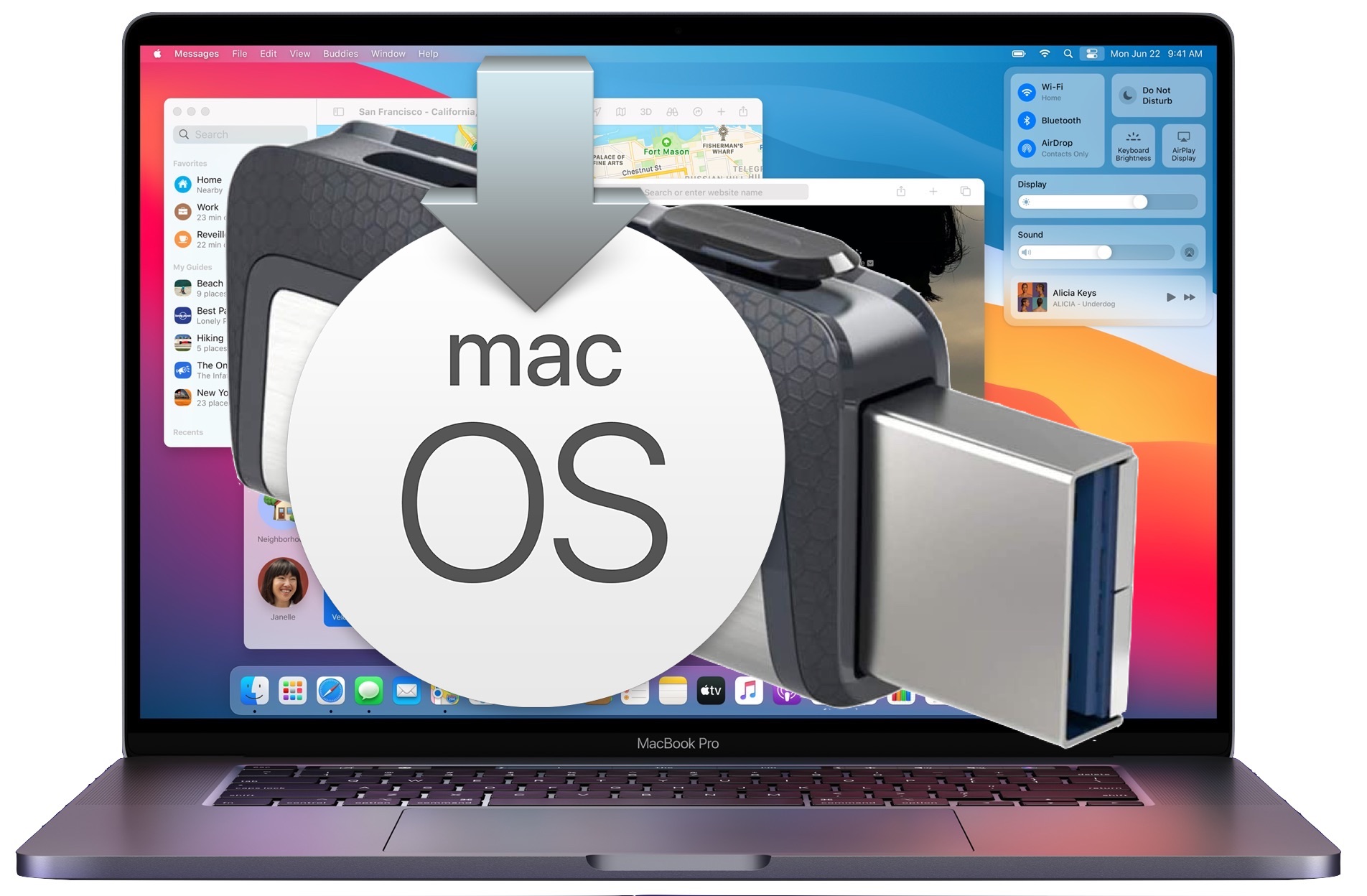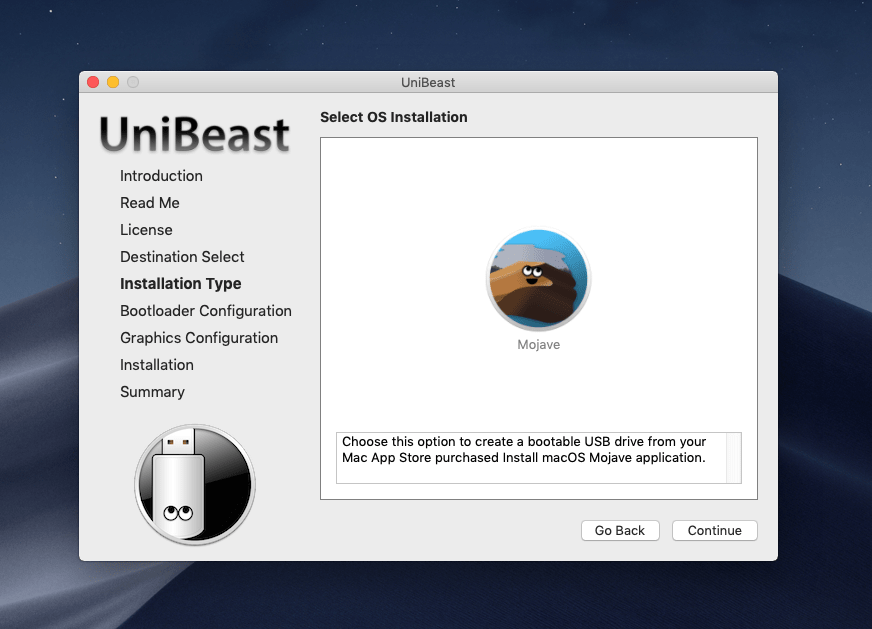- Create Bootable Usb Drive Mac Catalina
- Create Bootable Flash Drive From Iso Mac Os X
- Create Bootable Flash Drive Mac Os
- Create Bootable Usb Drive Mac Disk Utility
These advanced steps are primarily for system administrators and others who are familiar with the command line. You don't need a bootable installer to upgrade macOS or reinstall macOS, but it can be useful when you want to install on multiple computers without downloading the installer each time.
What you need to create a bootable installer
In order to create a bootable USB drive for Mac, you need download Mac OS installer. Open App Store on your Mac and search for the latest macOS version. Remember, App Store will only have the latest version which is macOS Mojave at this point when we write this article. Search for “macOS mojave” and click on the “Get” button. Plug the bootable installer into a Mac that is connected to the internet and compatible with the version of macOS you're installing. Press and hold the Option (Alt) ⌥ key immediately after turning on or restarting your Mac. Release the Option key when you see a dark screen showing your bootable volumes.
- A USB flash drive or other secondary volume formatted as Mac OS Extended, with at least 14GB of available storage
- A downloaded installer for macOS Big Sur, Catalina, Mojave, High Sierra, or El Capitan
Download macOS
- Download: macOS Big Sur, macOS Catalina, macOS Mojave, or macOS High Sierra
These download to your Applications folder as an app named Install macOS [version name]. If the installer opens after downloading, quit it without continuing installation. To get the correct installer, download from a Mac that is using macOS Sierra 10.12.5 or later, or El Capitan 10.11.6. Enterprise administrators, please download from Apple, not a locally hosted software-update server. - Download: OS X El Capitan
This downloads as a disk image named InstallMacOSX.dmg. On a Mac that is compatible with El Capitan, open the disk image and run the installer within, named InstallMacOSX.pkg. It installs an app named Install OS X El Capitan into your Applications folder. You will create the bootable installer from this app, not from the disk image or .pkg installer.
Use the 'createinstallmedia' command in Terminal
- Connect the USB flash drive or other volume that you're using for the bootable installer.
- Open Terminal, which is in the Utilities folder of your Applications folder.
- Type or paste one of the following commands in Terminal. These assume that the installer is in your Applications folder, and MyVolume is the name of the USB flash drive or other volume you're using. If it has a different name, replace
MyVolumein these commands with the name of your volume.
Big Sur:*
Catalina:*
Mojave:*
High Sierra:*
El Capitan:
* If your Mac is using macOS Sierra or earlier, include the --applicationpath argument and installer path, similar to the way this is done in the command for El Capitan.
After typing the command:

- Press Return to enter the command.
- When prompted, type your administrator password and press Return again. Terminal doesn't show any characters as you type your password.
- When prompted, type
Yto confirm that you want to erase the volume, then press Return. Terminal shows the progress as the volume is erased. - After the volume is erased, you may see an alert that Terminal would like to access files on a removable volume. Click OK to allow the copy to proceed.
- When Terminal says that it's done, the volume will have the same name as the installer you downloaded, such as Install macOS Big Sur. You can now quit Terminal and eject the volume.
Use the bootable installer
Determine whether you're using a Mac with Apple silicon, then follow the appropriate steps:
Apple silicon
- Plug the bootable installer into a Mac that is connected to the internet and compatible with the version of macOS you're installing.
- Turn on your Mac and continue to hold the power button until you see the startup options window, which shows your bootable volumes and a gear icon labled Options.
- Select the volume containing the bootable installer, then click Continue.
- When the macOS installer opens, follow the onscreen instructions.
Intel processor
- Plug the bootable installer into a Mac that is connected to the internet and compatible with the version of macOS you're installing.
- Press and hold the Option (Alt) ⌥ key immediately after turning on or restarting your Mac.
- Release the Option key when you see a dark screen showing your bootable volumes.
- Select the volume containing the bootable installer. Then click the up arrow or press Return.
If you can't start up from the bootable installer, make sure that the External Boot setting in Startup Security Utility is set to allow booting from external media. - Choose your language, if prompted.
- Select Install macOS (or Install OS X) from the Utilities window, then click Continue and follow the onscreen instructions.
Learn more
For more information about the createinstallmedia command and the arguments that you can use with it, make sure that the macOS installer is in your Applications folder, then enter the appropriate path in Terminal:
- Big Sur: /Applications/Install macOS Big Sur.app/Contents/Resources/createinstallmedia
- Catalina: /Applications/Install macOS Catalina.app/Contents/Resources/createinstallmedia
- Mojave: /Applications/Install macOS Mojave.app/Contents/Resources/createinstallmedia
- High Sierra: /Applications/Install macOS High Sierra.app/Contents/Resources/createinstallmedia
- El Capitan: /Applications/Install OS X El Capitan.app/Contents/Resources/createinstallmedia
A bootable installer doesn't download macOS from the internet, but it does require an internet connection to get firmware and other information specific to the Mac model.
Dec 21, 2020 • Filed to: Solve Mac Problems • Proven solutions
A Universal Serial Bus or USB Drive, also known as a flash drive is a portable data storage device that includes a memory which includes a USB interface. It is typically removable and much smaller than an optical disc. Any sort of data can be stored in this device. The drives are available in various sizes and as of to date, the 2TB(Tera-Byte) flash drives in terms of storage capacity are the largest ones available in the market.
Today, these drives are one of the most consumed used devices in the world. Thanks to their portable nature, affordability, and compatibility, USB drives are being used to send and receive endless information across a surplus of networks and platforms all around the globe. This small tool has opened the world to a stream of limitless options with respect to storing, transferring, copying data, and much more. One of them includes Booting the Mac from such a device.
Part 1. Reasons for Mac Boot from USB
Booting the Mac from USB in a way gives the power back to the user. The likeliest of the reason for choosing the boot from the USB method is that your Mac won't start which denies the user access to the computer. Using an external source like the USB drive helps the user get around the problem. It provides the user access to the contents of the internal drive, assuming the data is safe and not corrupted. It also helps to repair the Mac disk with Disk Utility and other tools. Here are the top reasons why the user should choose to Boot Mac from USB:
- Allows the user to install a different version of macOS.
- It allows the user to test a new version before you make the decision to upgrade.
- Allows risk-free testing of the Beta version.
- Faster and efficient.
- By installing older versions through USB, it permits certain Apps to run which are not compatible with the latest macOS.
Part 2. Preparations for Booting Mac from USB
To ensure a risk-free procedure certain measure should be taken:
- The user should buy a name-brand flash drive.
- The USB should contain 16-32GB of free space.
- The user should scan the flash drive with some reputable Anti-Virus software.
- The user should check to see what size of ports they have on the Mac. A 12' Mac only contains a single C-Type port.
- Make sure to purchase the C port flash drive to avoid any inconvenience.
- It is advised that the user should go with a USB 3.0 supported drive, with a size of 16GB to ensure a swift transfer of data.
- The USB drive should be formatted with a supported GUID partition.
- It should contain an OS X installer or a usable operating system to work with.

Part 3. How to Create Bootable USB on Mac


Create Bootable Usb Drive Mac Catalina
There are a few general guidelines that can help get your machine started which are mentioned above, regardless of the OS the user prefers. Here are the methods to create a bootable USB drive on Mac.
Creating a Bootable USB Using Terminal
The terminal is the default gateway to the command line on a Mac. It is just like the Command Prompt feature works for MS Windows. The Terminal feature ensures a hassle-free experience for the Mac user without the conventional pointing and clicking, the user just has to type the commands and the computer does the rest. The user can find Terminal in the Applications > Utility folder or it can be checked in the finder utility.
Using the Terminal feature is the most simple way to create the bootable USB drive. The user just needs to follow one easy step which is renaming the MyVolume portion of the command with the name of the drive. The name of the drive can be changed using the Disk Utility of Mac. Here are the steps required after opening the Terminal feature to create a bootable USB drive.
- Copy and paste the command which is suited for the version of the operating system into the Terminal window.
- The command for MacOS Mojave is as follows:
sudo/Applications/InstallmacOSMojave.app/Contents/Resources/createinstallmedia --volume/Volumes/MyVolume - Press the Return key.
- Enter the password.
- Confirm to erase the USB drive by typing Y followed by the Return key.
- The terminal will erase all the data inside the drive and create the bootable USB drive.
If there is a need to install a different version of the operating system then the user just has to replace the above-underlined command with their desired version of OS. For example, if the user wants to install Mac OS Sierra instead of Mojave then they would have to replace 'Mojave.app' with 'Sierra.app' inside the command line.
Part 4. How to Boot Mac from USB Media
After creating a bootable USB drive, the user simply needs to plug the created drive into the open port on the Mac. Here are the steps to boot Mac from the USB flash drive:
- Power on the system.
- Press and hold the Option (Alt) key on the keyboard when the computer starts.
- Select the USB drive as a startup disk when the option appears.
- The system will start the boot process off the USB drive.
- Install the operating system from the macOS utilities.
- Data can be restored by using the Time-Machine backup option.
Video Tutorial on How to Boot Mac into Recovery Mode
Part 5. How to Recover Data from Unbootable Mac
The Mac becomes unbootable when the BIOS which is a firmware that is used to perform hardware initialization during the booting process fails to recognize the startup process. It usually happens when there is a failed system update, system crash, damaged MBR, or when the drive becomes corrupt.
Recoverit Mac Data Recovery software is the most efficient option to recover all the lost data when Mac becomes unbootable. Developed by Wondershare, Recoverit is one of the most preferred recovery tools in the world. The tool provides an instant preview of what is recovered after a detailed scan. It allows us to connect almost every type of portable device and recover data from them. Data can be restored by performing the recovery and repair process. The process involves the installation of the Recoverit software that offers users the chance to get back the important data that they had lost.
Step 1. Create a Bootable Media
To recover data from an unbootable Mac, you need to create a bootable media first.
- Installation: Please Install Recoverit by clicking on the icon.
- Select an option: For your crashed Mac, please choose the 'Computer Crash Recovery' option.
- Initiate Recovery Process: Click on 'Start' for the recovery process to launch.

- Create Bootable Drive: Select the 'Create USB bootable drive' option and click on 'Create'.
- A pop-up dialogue will appear that will prompt the user to format the USB drive.
- Format the Drive: Click on 'Format' Now.
- Recoverit will show you the process of formatting the USB drive and creating a bootable drive.
- After a while, the bootable drive will be built up. And please follow the guides which Recoverit shows you.
Step 2. Recover Data from Crashed Mac
Here are the following steps required to recover data from an unbootable computer.
Create Bootable Flash Drive From Iso Mac Os X
1. Select the Location
When you launch Recoverit, you can select a location to scan. In this case, we will be performing data recovery on Mac's internal hard drive (Macintosh HD) instead of any other connected source.
2. Scan the Location
As soon as you would click on the 'Start' button, Recoverit will take the needed steps for data extraction. If you want positive results, then try not to close the application in between.
3. Preview and Recover
When the data recovery process is completed, the application will display the results on the interface. You can go to any category of your choice from here and preview the retrieved content. Make the needed selection and click on the 'Recover' button to save your files to a secure location.
All hope gets lost when the computer becomes unbootable and the data gets deleted. Recoverit recovery software is the most convenient program when it comes to retrieving lost data from the computer.
Installing the macOS from a USB flash drive gives the user an instant solution when the Mac installer due to some reason refused to work. The method to create a bootable drive is easier than it sounds. Now, you know what to do whenever you want to upgrade your macOS from a bootable external source by following different methods to ensure a safe and hassle-free process. If you lose valuable data when the Mac becomes unbootable then you can easily recover the lost files by using the Recoverit recovery software. Recoverit guarantees data recovery in no time.
Create Bootable Flash Drive Mac Os
What's Wrong with Mac
Create Bootable Usb Drive Mac Disk Utility
- Recover Your Mac
- Fix Your Mac
- Delete Your Mac
- Learn Mac Hacks
